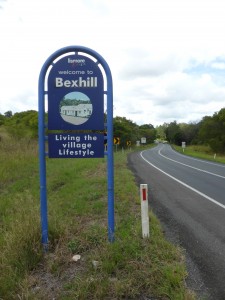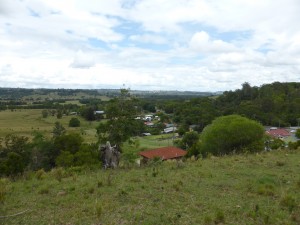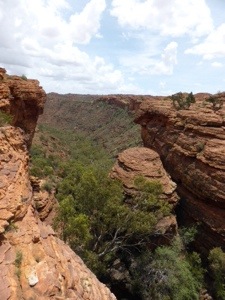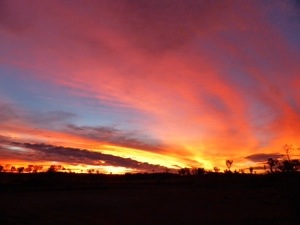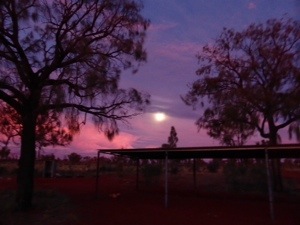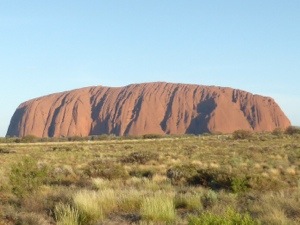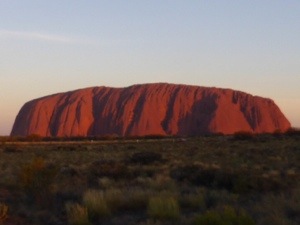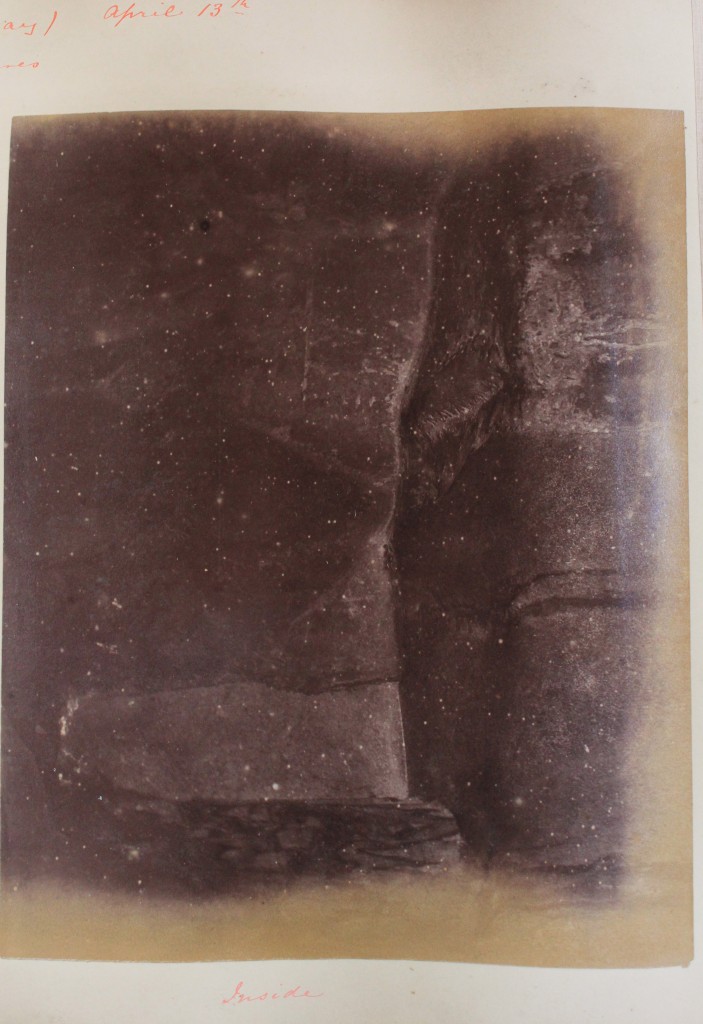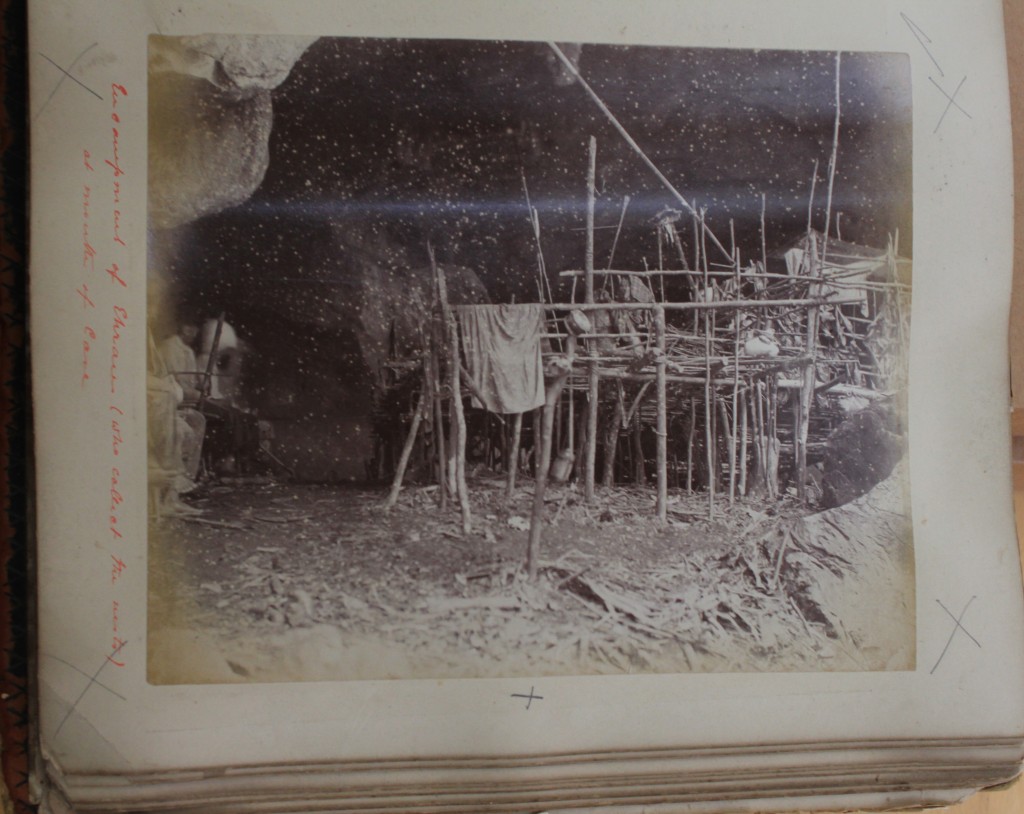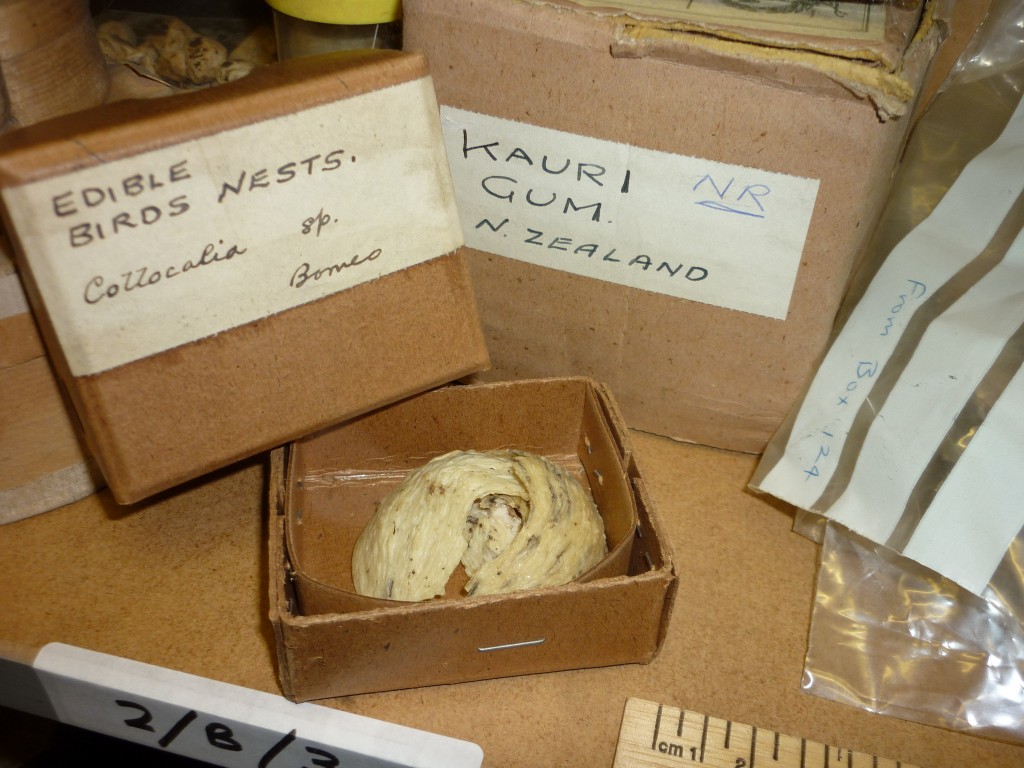Leaving Darwin I took the train and boarded The Ghan (how else would I travel through Australia?). Despite travelling economy, just a seat rather than a cabin for this 24 hour trip, this was to be one of my more comfortable train journeys. Set up to be something of a more luxurious travel ‘experience’, everything about The Ghan indicated that this was far more about the journey than any other train I had boarded. Checking in well over an hour ahead, luggage is stowed separately (although can be retrieved by any one of several accommodating staff if necessary) and the station, functional just once a week, includes a shop to purchase ‘Ghan’ related ephemera. It was all set in quite a relaxed atmosphere. People arriving are in much more of a holiday frame of mind than they might be if about to board a train to take them somewhere in particular. With fare reductions for Australian veterans and ‘seniors’, many of the passengers are derived from this cohort. A more sedate journey this was set to be. I should not have been so surprised to hear the dulcet tones of Bing Crosby ring out as I boarded the carriage. This was unlikely to be a trip made by anyone actually wanting to go to Alice Springs, not in any hurry anyway. To travel efficiently around Australia it is generally regarded that you need to fly.
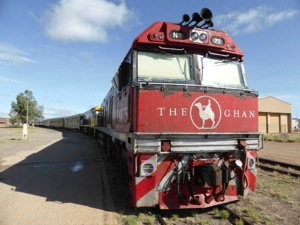
The Ghan (Louise Kenward, 2014)
There was a range of passengers travelling, some younger folk, back packers with YHA discounts, or like me, those who had purchased a rail pass allowing travel on the Ghan, Overland (Melbourne-Adelaide) and Indian-Pacific (Perth-Sydney) for the next three months. So to dispel any myths that this is expensive (indeed it can be if that is what you choose), compared to many of the instant price rises I saw on landing in Australia, the train was not one of the most alarming. I just had to adjust my expectations of having a bed for the night.
It is a peculiar thing to be in a train station where there is only one train a week. There are no commuters, no families, no regulars, it is an event just for the train to arrive. Details like timetables are irrelevant here. I was surprised to learn that this train has only been arriving in Darwin for ten years. The line had been planned for for some considerable time before this – approximately one hundred years in fact – but with various complications of engineering, termites, flooding, politics and funding, there has only been a train line with a functioning passenger railway service for ten years connecting the North of Australia with the South.
Parts of the country have been connected on the way to making such a link between Darwin and Adelaide, but it seems that travelling by train has never really been a groovy thing to do in Australia. The previous Ghan ran from Adelaide to Alice Springs, and in the film marking the end of this era, it is noted that the line that ran for half a century attracted passengers, up until it was due to close, who were generally regarded as somewhat eccentric. What also intrigued and fascinated me about this film was that it had no discernible start or end, but continued to run on its peculiar never ending loop.
Said film was seen at The Old Ghan Museum in Alice Springs, and provided a perfect accompaniment to the equally adorable museum and well matched lady who was, it seemed care taker and cleaner, happily going about her business with her dog being leashed to one or other objects in the museum along the way. The dog clearly not a fan of her vacuum cleaner. Apart from this duo, I was the only one in the museum. This set the scene well for me to lose sight of any time, either past or present. I am interested in the number of visitors it usually has. When I arrived the museum looked closed, not least because a sign outside stated that it was in fact closed. If it hadn’t been for a two hour wait before the next bus to arrive I may have accepted that. Nonetheless, I wandered around and to see what I could find and was greeted by the lovely lady with her dog, who invited me in and reassured me that it was indeed open. She explained that the ticket office is in the truck museum opposite, so the ‘closed’ sign is to redirect people to pay their admission fee there. I hadn’t figured that out. She let me in anyway and I promised I would pay at the museum of trucks afterwards.
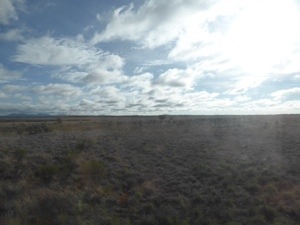
Darwin to Alice Springs (Louise Kenward, 2014)
I enjoyed the atmosphere and the quaintness of the Old Ghan Museum, I liked that it was devoid of visitors and that I could climb aboard one of the old rail carriages. It contained many panels of information about the history of trains and the history of the Ghan. It cited how work started in 1878 north of Port Augusta and south of Darwin (the line mentioned in Annie’s ‘The Last Voyage’). I think that one of the appeals of the museum for me was that it included such a catalogue of ephemera and information of camels, crockery, ceiling lights and carpets that the ages drifted into each other and it was hard to establish the passing of time and indeed what year it actually was. The railway was historic and recent all at once, with little discernible space in between.
So, I have reached Alice Springs without actually getting to the part of how I got here. And it is all about the getting there when travelling by train, no where more so than Australia. This was my first sight of the Australian scenery, the wilderness, the outback. My first sight of its immensity and largeness, it’s flatness and never ending-ness. I loved it. The colour was the brilliant orange red I imagined after seeing photos and films. In contrast, I had not anticipated how blue it is possible for the sky to be. Punctured by skeleton trees, shrubs and very occasional signs of ‘white man’ with pylons and fencing, the trip was a magnificent contrast to the cities and cramped spaces I had experienced in the last couple of months.
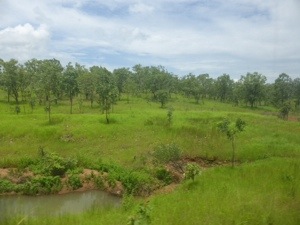
Australia is green! (some of the time), Louise Kenward, 2014
The landscape did alter. I was not expecting it to be green. In the Northern Territories it had been ‘wet season’ for a while now – no one ever told me it rained here, this is a secret Australia keeps very well guarded. I had visited Litchfield National Park earlier in the week and had the chance to visit Katherine Gorge (Nitmiluk National Park) en route. Kakadu had been closed because of the rain unfortunately, the roads were closed prohibiting access. Both parks included impressive rock formations, valleys, rivers and waterfalls. They are also on a staggering scale, Litchfield alone is 650sq-km and contains an inordinate amount of archaeological history and aboriginal culture. After leaving Katherine, heading south to Alice, the landscape transformed into the views I’d imagined of the ‘Red Centre’. The bare land glows beneath the sun it is such a vivid orange, and the blue of the sky isn’t even a colour I recognised to exist in the natural world. And in between, there lay ‘bush’ for as far as you could see. Then when you had reached that point, bush lay for as far as you could see, and so on and so on. The low lying shrubs and sparsely growing trees, somehow managing to survive on the arid flat land, emphasised the distance and scale of the landscape more than I had before witnessed.
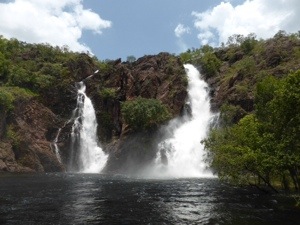
Wangi Falls, Litchfield National Park (Louise Kenward, 2014)
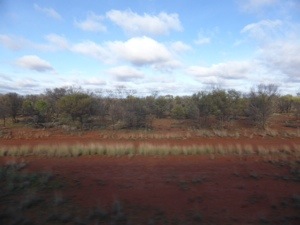
Darwin to Alice Springs (Louise Kenward, 2014)
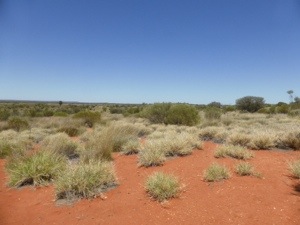
Darwin to Alice Springs (Louise Kenward, 2014)
Unlike earlier train journeys, like the trans-siberian for example, which was equally (if not more) barren and remote, there were no small trackside dwellings. It seemed entirely likely that there was no one to be found from Darwin to Alice Springs. There are of course small townships and inhabitants in a few places along the way, but mostly it is empty. Land that looks so appealing is, however, utterly remorseless. It takes no prisoners (irony intended).
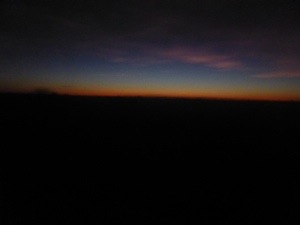
Sunrise on The Ghan (Louise Kenward, 2014)

